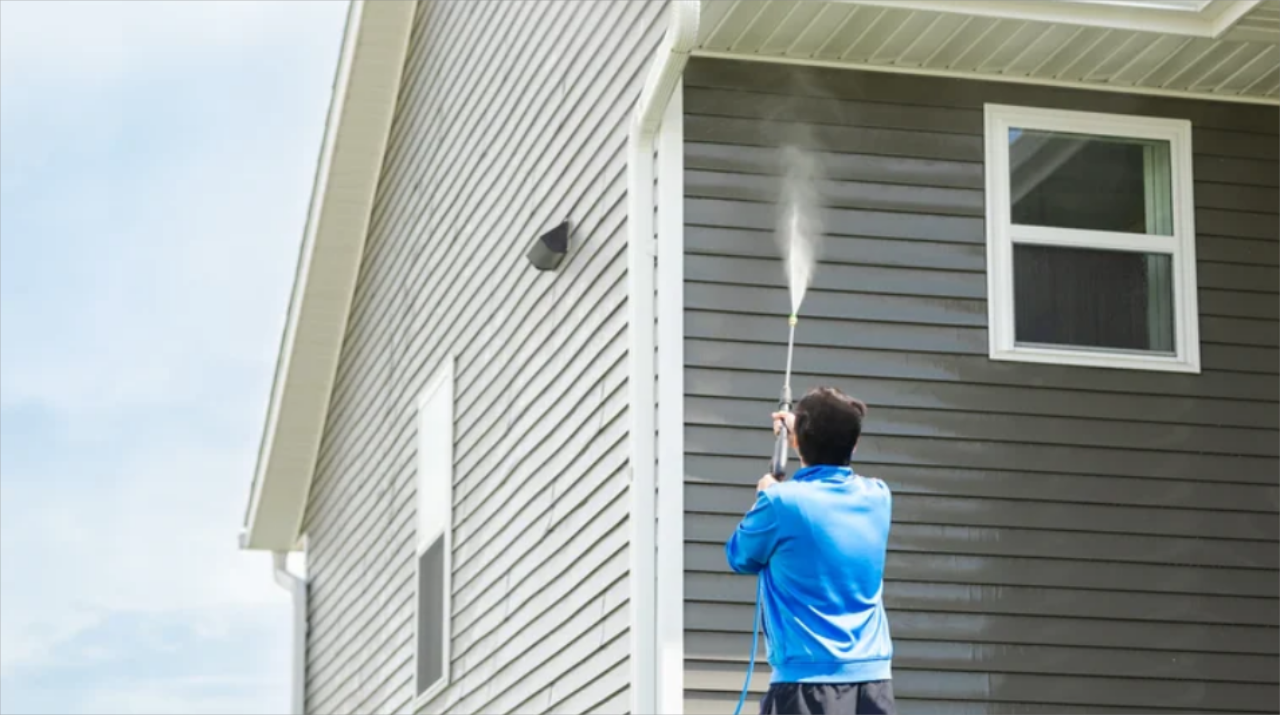Best Practices for Maintaining Rendered Surfaces with Soft Washing
Render adds beauty and durability to any property, but without the right care, it can become discolored, algae-stained, or damaged over time. Fortunately, soft washing is one of the most effective ways to maintain render without the risks of high-pressure damage.
In this guide, we’ll break down practical maintenance tips, share the best chemicals and equipment to use, and offer professional advice on extending the lifespan of your rendered surfaces.

Why Soft Washing Works for Render
Soft washing uses a low-pressure spray combined with specialized cleaning agents to remove dirt, algae, mold, and mildew. It’s ideal for surfaces like:
● Painted render
● K-Rend and Monocouche
● Lime-based or older stucco
● Synthetic textured coatings
Unlike pressure washing, soft washing cleans without abrasion, protecting the finish while eliminating organic growth at the root.
Key Tips for Maintaining Rendered Surfaces
1. Use the Right Chemical Mix
Choosing the correct chemical solution is essential. For rendered surfaces, a sodium hypochlorite-based cleaner with a dwell-enhancing surfactant works best.
Recommended Products from LNI Equipment:
● Sodium Hypochlorite (12.5%) – effective at breaking down algae and mildew
● Blue Crush – a powerful surfactant that clings to vertical surfaces
● Lemon Drop – bleach mask to improve odor and customer experience
● Roof Guard – enhances dwell time, particularly in colder weather
Mix Tip: For rendered walls, a 0.5% to 1% SH solution is typically effective—strong enough to clean, gentle enough to avoid damage.
2. Stick to a Consistent Cleaning Schedule
Render surfaces should be soft washed on a routine basis, not just when stains are visible.
● Inspection: Every 6 months
● Cleaning: Every 1–2 years, depending on local conditions
● Preventative maintenance: Apply biocide or low-dose SH mix annually in high-growth areas
Avoid waiting until algae becomes visible. Regular treatment prolongs surface integrity and reduces the need for intensive cleaning.
3. Use the Right Equipment
For soft washing render, even spray patterns and flow control are critical. Essential Tools:
● 12V Soft Wash Pump – offers consistent low-pressure application
● Fan Tip Nozzles – ensure even coverage on delicate surfaces
● Soft Wash Hose + Reel – keeps operations clean and efficient
● Proportioning Valve or Downstream Injector – for precise mixing on the job
LNI Equipment can help you build a full trailer or backpack unit optimized for render and vertical surface work.
4. Protect the Surrounding Environment
While SH is biodegradable, overspray can damage plants or discolor nearby materials if not managed properly. Best Practices:
● Pre-wet plants and soil before application
● Use tarps or shields to protect windows and flower beds
● Rinse surrounding surfaces with water or use a neutralizer
● Avoid windy days that cause drift onto unintended areas
Soft washing can be environmentally responsible—if handled professionally.
Optional: Add Biocides for Long-Term Prevention
If your client prefers long-lasting results, biocides can be added after the main soft wash process. These solutions leave a residual effect, slowing future organic growth without harsh chemicals.
Contact us for guidance on which preventative treatments pair best with LNI’s core SH-based systems.
Final Thoughts
Maintaining rendered surfaces doesn’t require aggressive methods or guesswork. With the right combination of soft washing products, routine care, and professional equipment, you can preserve appearance and avoid costly repairs.
Soft washing is the safest and most effective solution available for render—and with consistent application, it keeps surfaces looking new for years.
Ready to upgrade your render cleaning approach?
LNI Equipment offers:
● Commercial-grade sodium hypochlorite
● Professional surfactants, masks, and additives
● Trailer builds and portable pump systems
● Expert guidance on chemical handling and equipment setup
📍 Visit: lniequipment.com
📞 Call/Text: 732-522-8880
📧 Email: contact@lniequipment.com
Related Blogs:
